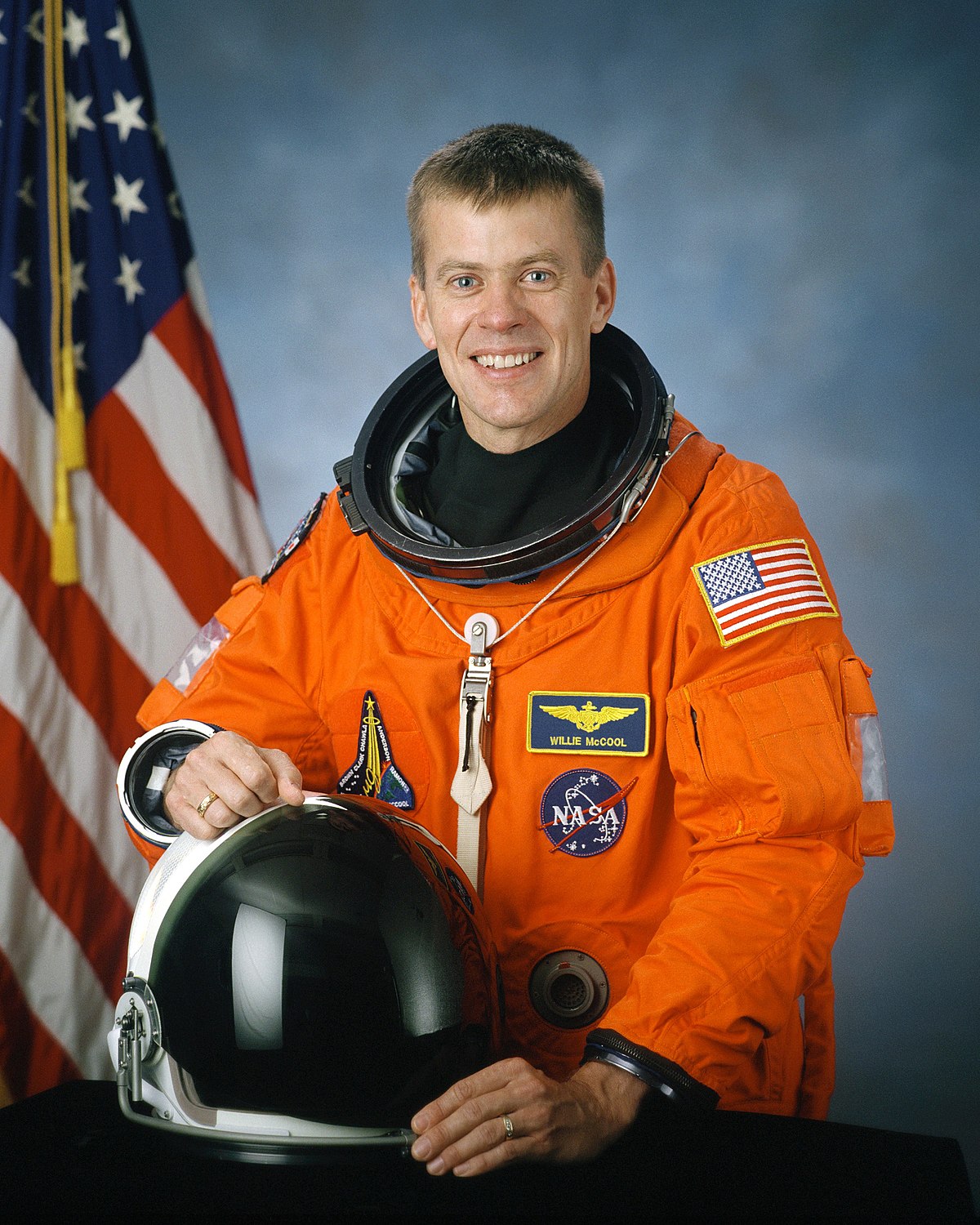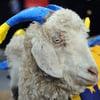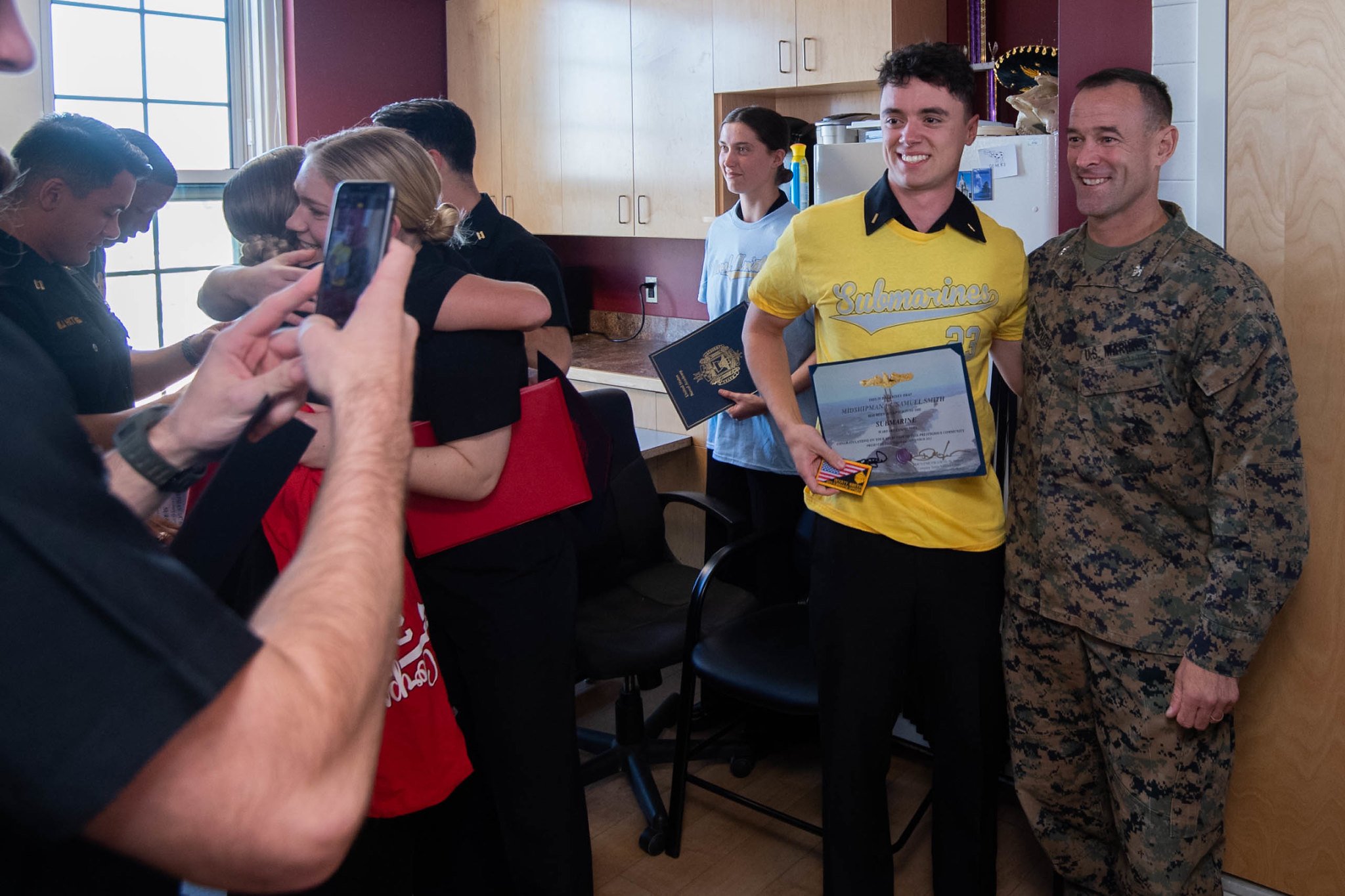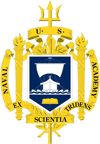
After his death, William C. McCool was awarded the third highest honor bestowed on an astronaut—the Congressional Space Medal of Honor. He also received the NASA Space Flight Medal, the NASA Distinguished Service Medal and the Defense Distinguished Service Medal. On October 7, 2023, Secretary of the Navy (SECNAV) Carlos Del Toro posthumously promoted Cmdr. William “Willie” C. McCool to the rank of Captain. Captain William C. McCool made tremendous contributions to the U.S. Navy, NASA and the world throughout his extraordinary life. Although it was cut short tragically when the vessel he was commanding, the space shuttle Columbia, was lost, his achievements will never be forgotten.
A Great Liftoff
Captain William C. “Willie” McCool was a driven young man from the beginning. A dedicated Eagle Scout, he graduated from Coronado High School in Lubbock, Texas, in 1979 and was accepted into the Naval Academy. In 1983, he earned his Bachelor’s of Science in Applied Science from the Academy, graduating second in a class of 1,083. Then McCool went on to earn his Master’s of Science in Computer Science from the University of Maryland in 1985, and his Master’s of Science in Aeronautical Engineering from the U.S. Naval Postgraduate School in 1992.
This USNA graduate’s remarkable accomplishments were a constant throughout his life. At the U.S. Naval Test Pilot School, Class 101 he received both “Outstanding Student” and “Best DT-II Thesis” awards at graduation. He also earned two Navy Commendation Medals, two Navy Achievement Medals and various other service awards throughout his career.
Related: USNA Notable Graduate: Charles F. Bolden, Jr.
Captain McCool finished his flight training in August 1986 and joined the Tactical Electronic Warfare Squadron 129 at Whidbey Island, Washington, where he underwent EA-6B Prowler training.He made his first operational tour with Tactical Electronic Warfare Squadron 133, completing two deployments aboard the USS CORAL SEA (CV-43) to the Mediterranean Sea; here he received designation as a wing qualified landing signal officer (LSO).
That’s when his career took off. In November 1989, McCool was selected for the Naval Postgraduate School/Test Pilot School (TPS) Cooperative Education Program. Upon graduation in June 1992, he became a TA-4J and EA-6B test pilot in the Flight Systems Department of Strike Aircraft Test Directorate at Patuxent River, Maryland, where he helped manage and perform a number of important projects, from airframe fatigue life studies to avionics upgrades.
He focused on flight testing the Advanced Capability (ADVCAP) EA-6B. Once this tour concluded, McCool returned to Whidbey Island, where he was assigned to Tactical Electronic Warfare Squadron 132 aboard USS Enterprise (CVN-65). He served as administrative and operations officer with the squadron through their work-up cycle. All told, McCool had flown for more than 2,800 hours in 24 aircraft and more than 400 carrier arrestments. Then he heard from NASA. He had been accepted into their Astronaut Candidate Training Program.
Related: USNA Notable Graduate: Kayla Barron
Space Dreams
By August 1996, McCool reported to the Johnson Space Center in Houston, Texas. After the mandatory two years of basic training and evaluation, he was ready to serve. NASA assigned him to the Computer Support Branch, and he also became technical assistant to the director of flight crew operations and handled upgrade issues for the shuttle cockpit for the Astronaut Office. Then came his chance to be in space. Captain McCool was selected as the pilot on the STS-107 Columbia.
Along with six other astronauts, McCool spent 15 days, 22 hours and 20 minutes in space, maximizing their time with about 80 experiments. They studied microgravity for the first time in five years, working in two alternating shifts that spanned 24 hours each. From January 16 through February 1, 2003, they made exceptional headway, and Astronaut McCool loved every minute in space. "There is so much more than what I ever expected," he said. "It's beyond imagination, until you actually get up and see it and experience it and feel it."
Then came the part the world witnessed with shock and sadness. On its return to Earth, just sixteen minutes shy of the projected landing time in Florida, the Space Shuttle Columbia burned up upon re-entry. Debris was scattered over McCool’s home state of Texas. It was later discovered the heat-resistant thermal tiles had been damaged during take-off, and the shuttle exploded due to the extreme heat.
McCool had three sons with his wife, Lani. He was known for his great love of his family, and his passions included a number of outdoor activities, including running, mountain biking, cross country running, backcountry hiking/camping and swimming, as well as playing guitar and chess.
A Debt of Gratitude
We honor Captain McCool’s memory here at the Naval Academy. From a bright and shining midshipman star, to his stellar naval career, to his role in furthering space exploration, his contributions have been vast and important. In fact, he was immortalized with one of seven asteroids named after the seven Columbia astronauts; his is 51829 Williemccool. He has also had one of seven hills named for him on Mars, and one of seven craters on the Moon. There is also an inspiring stone monument behind the 15th Tee of the Naval Academy golf course commemorating Captain McCool.
We are grateful for his tremendous service to our country. Please join us in honoring Captain McCool as well as the countless other USNA graduates who have given their lives in service of the United States. You can help by visiting the places they once called home on the Yard. When you visit the Yard, you’re giving back to the midshipmen who give their all. Take a tour and the proceeds go directly to the Brigade of Midshipmen. We thank you for your support.



.png)


